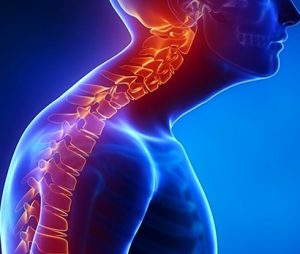Whether we like it or not, our society is becoming increasingly sedentary daily. The average workweek for many Americans consists of sitting at a desk and working on a computer for eight hours a day. These inactive hours then have the additional hour commute of work and several hours of TV to unwind at the end of the day. Neck pain has a direct correlation with the increase in time seated.
We are spending more time seated than any generation before us. What are the immediate and long-term health effects of sitting for long periods? Could these stresses be contributing to an overall worsening health? Are we in the midst of a sitting “epidemic”?
What are the Acute Health Effects of Sitting?

Every day at Life in Motion Chiropractic, we observe the effects of muscle imbalances due to sitting. Headaches, neck pain, shoulder pain, low back strains, and achy muscles are just a few conditions that tie to your current desk jockey’s posture.
Chronically tight “trap” (trapezius) muscles cause you to feel like the tops of your shoulders are hiked up to your ears. Chronically tight chest (pectoral) muscles develop because we always reach for things in front of us. These tight muscles present a forward, rounded shoulder appearance.
Weakened muscles in the front part of the neck cause the head to drift down and forward (allowing you to view your phone or computer better). This forward drift of the head will force muscles at the base of the skull to tighten, creating a nagging headache at the bottom of your skull. These positions create a snowball effect as our head begins to drift further and further forward. Researchers have found that for every inch forward, your head moves, adding 10 pounds of stress to the upper back and neck muscles.¹
Sitting also requires little abdominal muscle activation, which results in a de-conditioned and weak core. The weaker the abdomen, the more your spine must absorb your daily stresses and the more likely you are to injure the back from regular tasks. Something as familiar as bending forward to pick up a piece of paper or pen you dropped can cause the back to “go out.”
 Long-Term Implications of Sitting
Long-Term Implications of Sitting
A study in 2005 published in the prestigious Spine Journal found that health measures such as breathing, heart rate, pain, and disability worsened with deteriorating posture.² The study further found that the worse the curve, the worse the health status markers as well as increased incidence of neck pain.
Another study in 2004 followed 1,353 participants over three years. They found that older men and women with larger curves in their mid-back (hyper-kyphotic or “hunchback”) have higher mortality rates.³ We’re learning that these postural distortions may have health implications beyond tight muscles, aches, and pains. They may be preventing us from living a longer, more fulfilling life.
What Can We Do About It?
While some aspects of our posture are structural (bone positioning, length of muscles), a lot of our posture is learned. We recommend placing several small stickers around your workspace in locations visible from your seat (at the top of your computer monitor, on the cabinet drawer, etc.). Throughout your workday, as your eyes wander around your space and land on these stickers, let it be a reminder to sit tall, roll your shoulders back, bring your chin to a neutral position, and breathe with your diaphragm through your stomach. These constant reminders can help you learn better posture.
Our office has a great series of “Micro-Break” stretches that can be incorporated right from your desk. We recommend a 2-minute break every 30 minutes of work to perform these stretches and help combat the tight muscles.

Click Here for a Downloadable PDF of our Micro Breaks handout.
Additional Tips
If you are feeling overwhelmed by the recommendations, keep your head up; Rome wasn’t built in a day. We can’t combat years of learned postural stresses by performing a few stretches once.
The key to properly addressing these problems are:
- Regular breaks
- Stretching tight muscles
- Strengthening weaker muscles
- Being aware of how you’re sitting
We can also provide “Lunch n’ Learns” at your workplace, where we provide information on how to avoid injuries while you’re working. Whether seeking relief from chronic pain or simply aiming for optimal health, your Livonia chiropractor guides you every step of the way. Contact our office to schedule an appointment by Clicking Here or giving us a call today: 734-427-6333
References
- Kapandji, I. A. The Physiology of the Joints. Edinburgh: Churchill Livingstone, 2007.
- Glassman SD, et al. The impact of positive sagittal balance in adult spinal deformity. Spine 2005 Sept 15;30(18):2024-9.
- Kado DM, et al. Hyperkyphotic posture predicts mortality in older community-dwelling men and women: a prospective study. J Am Geriatr Soc. 2004 Oct;52(10):1662-7.


 Long-Term Implications of Sitting
Long-Term Implications of Sitting